Our Rich History
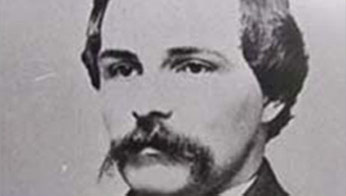
Past District Attorneys
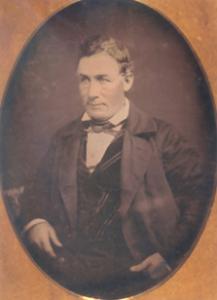
Walter A. Skidmore was the first District Attorney of Marin County. He was born in 1807 in South Hempstead, Long Island, New York. He married his first wife, Phebe Frost, on May 25, 1836 in New York City, New York. Their son, Walter A. Skidmore, Jr., was born in New York in 1837. In 1850, Skidmore began his career as a teacher in Marin County’s first school at the Mission San Raphael Archangel site. In September 1851 at age 44, when Skidmore was admitted to the practice of law in the California Court of Sessions, he was selected to serve as Marin County District Attorney. On June 11, 1854, Skidmore married his second wife, Dona Madalina de Meranda, at the Church of San Rafael. Skidmore left office in 1855 after serving as District Attorney for four years. In 1859, four years after leaving office, Skidmore fatally poisoned his wife’s three-week-old child, believing the child was illegitimate. A Coroner’s Inquest was held and a jury returned a verdict that the child’s cause of death was from strychnine poisoning administered by Skidmore. Before the results of the Inquest were made public, Skidmore fled to parts unknown. However, a warrant for Skidmore’s arrest was issued and he was arrested in San Francisco as he was boarding a vessel for Oregon. See two 1859 articles from the Sacramento Daily Union below for details. It is unknown if Skidmore was ever prosecuted for the death of the child but he left Marin County in January 1860. Thereafter he resided in Mexico until 1863. From Mexico he went to Kingston, Jamaica, where he resided for one year. In November 1864, he went to Philadelphia, Pennsylvania, where he resided until his death on September 7, 1868, at age 61.
Sacramento Daily Union 12-7-1859  Reprint from Sacramento Daily Union, Vol. 18, number 2713, December 7, 1859
Reprint from Sacramento Daily Union, Vol. 18, number 2713, December 7, 1859
Sacramento Daily Union 12-10-1859  Reprint from Sacramento Daily Union, Vol. 18, number 2716, December 10, 1859
Reprint from Sacramento Daily Union, Vol. 18, number 2716, December 10, 1859
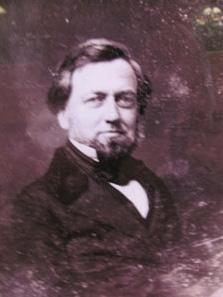
John H. Haralson, who served as the second elected Marin County District Attorney, was born in Georgia in 1817. He served eight years as District Attorney from 1855 until 1863. In July 1860, while serving as Marin County District Attorney, John H. Haralson was assigned to prosecute a high visibility murder case after the defendant successfully moved for a change of venue from San Francisco County. The defendant, David S. Terry, a former Chief Justice of the California Supreme Court, was charged with the murder of United States Senator David Broderick from California, after shooting Broderick in a duel in San Francisco on September 13, 1859. The duel was the result of an argument over the slavery issue then facing the divided nation. In Sacramento, the public reaction against former Chief Justice Terry, who favored slavery, was running very high. Senator Broderick was catapulted into martyrdom for the cause of black freedom, and Terry became the sacrificial lamb. Realizing the gravity of his situation, Terry moved for a change of venue from San Francisco. His case was transferred to San Raphael where it was assigned to Judge James H. Hardy's court with District Attorney Haralson prosecuting the case. On the day of the trial, the main witnesses for the prosecution were late in arriving. In spite of the fact that it was known they would be along soon, Judge Hardy insisted upon proceeding on schedule, without them. A jury was impaneled and the trial commenced without objection by District Attorney Haralson and without a request for a continuance. Indeed, Haralson accepted the first twelve prospective jurors called to the box without asking any questions on voir dire. Two hours later, the witnesses still not having appeared, the case was submitted to the jury. With no one to testify against him, Terry was acquitted by the jury on July 6, 1860.
As a result of the acquittal of former Chief Justice Terry and how his trial was handled, serious accusations were made that Judge Hardy had conspired with District Attorney Haralson to "fix" Terry's trial to ensure an acquittal. Judge Hardy was known to be vehemently outspoken in favor of slavery (as was Terry),and District Attorney Haralson was a native of Georgia. Ultimately, in 1862, articles of impeachment were brought against Judge Hardy by the California State Senate charging him with various kinds of corrupt judicial conduct and behaving publicly in a manner not consistent with the judicial office. This was the first impeachment of a judge in the history of California. The most serious accusation made was that Judge Hardy had conspired with the District Attorney Haralson to "fix" Terry's trial. During the impeachment trial, allegations were made that during the prosecution of Chief Justice Terry, District Attorney Haralson was incompetent and drunk, "[having] been sodden with drink for a month." Following the trial in the State Senate that lasted fourteen days, an oral vote was taken among the Senators and Judge Hardy was acquitted of all charges, except disloyalty to his country. As a result, Judge Hardy was immediately removed from office on May 14, 1862. District Attorney Haralson died of an undisclosed illness on December 20, 1891, in San Rafael at the age of 74.
July 7, 1860 Sacramento Daily Union article about the trial of Chief Justice David Terry 
May 22, 1862 Sacramento Daily Union article setting forth Haralson’s reply to allegations of incompetence and drunkenness 
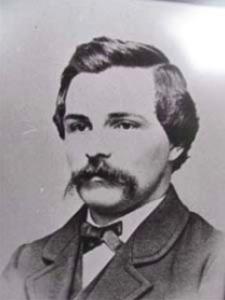
Bradley Hall was born in 1838 in New York. At the age of 26, he became Marin County District Attorney in 1864. In December 1866, District Attorney Hall tried one of the most important and interesting murder trials ever investigated in California up to that date. He successfully prosecuted defendant Timothy Cronin for the murder of his wife (who was the mother of Cronin’s seven children),with the jury returning a guilty verdict of first degree murder in a case based solely on circumstantial evidence. See Sonoma Democrat article below for details. He died during his second term on January 8, 1870, at the age of 32. According to the January 15, 1870, edition of the Marin County Journal, “The immediate cause of death was pneumonia, the disease having supervened during an attack of typhoid fever, which had been ushered in by a feverish state accompanied by considerable disturbance of the brain. Immediately upon receipt of the information of the death of Mr. Hall, a meeting of the county officers was held at the Courthouse.” At the meeting, it was resolved that “this community has lost one of its most intelligent and praiseworthy citizens, the county one of its most faithful, energetic and devoted officers, the Bar one of its brightest ornaments, and his family a true and kind protector.” It was further resolved the Courthouse be draped in mourning for the period of thirty days, and the flag be placed at halfmast. Bradley Hall was one of the charter members of the Marin Masonic Lodge No. 191.
1866 Marin DV Murder Trail, Reprint from the Sonoma Democrat, Number 10, December 15, 1866 
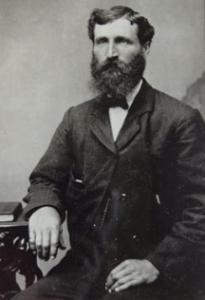
A native of the State of Virginia, Thomas Hawkins Hanson was born in 1828. He arrived in the San Rafael Township in 1854 at the age of 26 and began practicing law as one of the first members of the Marin County Bar. From 1856 to 1861, he was the elected Treasurer of the County of Marin. Hanson served as the elected District Attorney of Marin County from 1869 to 1871. Thereafter, he served for several years as Judge of the Marin County Superior Court. Thomas Hanson was one of the charter members of the Marin Masonic Lodge No. 191 of which he was a Past Master. Hanson died in April 1883 at the age of 55 at his residence in San Rafael as the result of an undisclosed illness. At the time of his death, he was survived by his widow, Carlotta (a native of Chile),and a son, Grafton, who was a student at West Point Military Academy. Upon his death, the flag at the Courthouse hung at half mast in respect to his memory.
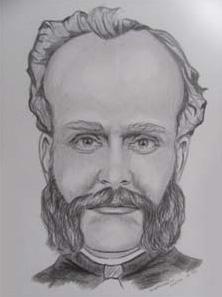
Edward Barry Mahon was born in the valley of the Ottawa, on Grand River, in the Dominion of Canada, in September 1834. He was the youngest son of Irish immigrants who were pioneers of that settlement. He was fortunate in having the advantage of excellent teachers, from whom he received a very thorough English education, and afterwards from private tutors, there being no college in the vicinity, who taught him Latin and French.
At an early age, however, he was thrown on his own resources, and at the age of sixteen or seventeen commenced teaching school, in which he developed an aptitude and proficiency far in advance of his years. His time, while out of the schoolroom, was devoted to study. Among other things, he exhibited an early love for the free institutions and laws of the United States, and was an advocate of annexation of the Canadas to that government, a proposition which at that time was often mooted.
Meanwhile, a brother of his, Timothy J. Mahon, who for some years had been a resident of the State of New York, on the first intelligence of the gold discoveries in California, in company with several others from New York, sailed from that city in 1849 and sought this western land of promise by way of Cape Horn. Edward B. Mahon left New York in the beginning of 1857, and his recollection of the very unlevel condition of the sea off Cape Hatteras and of the solemn protest which his inner man made against such actings and doings on the part of wind and waves, are still very vivid, if not inspiring. The change from the snows of New York to the tropical green of Jamaica was, if not a surprise, at least some recompense for all the wrongs inflicted on him by old Neptune.
The passage thence by way of the Panama Railroad and the Pacific mail steamer to San Francisco was uneventful. One of the small sloops then plying on the Bay of San Francisco served to convey him to San Rafael, where he arrived in April 1857. San Rafael then consisted of some half dozen houses, the principal of which was the former ranch house of Don Timoteo Murphy, afterwards owned by Timothy J. Mahon, brother of E. B. Mahon, who was then one of the solid men among the pioneers of Marin County, a position which, through its mutations of over thirty years, he has always maintained.
At the season in which Edward Mahon arrived, the valley of San Rafael was spread before him in all its native loveliness, the hills surrounding it, as well as the valley itself, clad in a deep green, the Bay of San Francisco on the one side, ranges of low hills with the lordly heights of Mount Tamalpais on the other, altogether presented, as it still does, a very beautiful landscape. It was a place for which nature had done much and art nothing. No fences met the eye in any direction, and nothing but the steepness of some points in the hills prevented the traveler from riding his horse to any point of the compass. The only road leading to or from the village was the one towards Petaluma, and the sight of any vehicle on that road was a rare occurrence. Horse-back was the universal means of travel and trails led in every direction, and, indeed, in proportion to the population there was at least as much traveling done then as now. Every man was a caballero, and the proprietor of from one to a dozen mustangs and sometimes half-breed American horses.
The native Spanish-California population predominated and the Spanish language was spoken by nearly everybody. Within six or eight months, with the aid of a stray volume of Ollendorf and a constant inquiry of the names of things, Edward Mahon acquired a sufficient stock of Spanish nouns and adjectives, with an occasional verb, to make himself understood.
The Murphy adobe ranch house was used as a Courthouse, and even at that early day cases involving the title to thousands of acres and hundreds of thousands of dollars, and embracing a wide range of civil and criminal jurisprudence, were argued and tried within the walls of that old adobe. Some of the most eminent lawyers in this State took part in these controversies. Judge E. W. McKinstry, now of the Supreme Court, was District Judge for the territory embracing Marin County, and James A. McDougall, afterwards United States Senator from California, James McM. Shafter, Treanor W. Park, Oscar L. Shafter, Judge Solomon Heydenfeldt, C. M. Bronson, afterwards Judge of the Supreme Court of Nevada, Solomon A. Sharp, W. H. Patterson, and many others occupied a great portion of their time and took a leading part in the litigation there conducted.
The first few years of Edward Mahon's time were spent in keeping store, for which he did not exhibit much aptitude, and having resolved to become a lawyer, under the instruction and advice of the Hon. C. M. Bronson, he purchased some books and commenced with a persistent determination that ordinary obstacles could not overcome to study the elements of law. He afterwards entered the law office of Cook, Bronson & Hittell, in San Francisco, as a law student. His studies here were interrupted by a severe attack of smallpox, which nearly cost him his life. As soon as he recovered, however, he returned to his studies at San Rafael with undiminished ardor, and in 1863 passed a very creditable examination before the Supreme Court of the State of California, at Sacramento, and obtained his license. He was afterwards admitted to practice in the United States District and Circuit courts.
He has always, since his arrival in this State, been identified with the County of Marin, and has been a resident of that county all of that time, except while pursuing his studies in San Francisco. He was elected County Treasurer of Marin County from 1865 to 1869.
He married his wife, Margaret, on October 8, 1867.
Mahon was the elected Marin County District Attorney from 1871 to 1873, which office he filled with unremitting care and unswerving fidelity.
As a lawyer, he is laborious, thorough and faithful, and displays a clear head and a logical mind; his practice, both in the District Court and Supreme Court, has been, considering the field open to him, both varied and eminently successful. Some of his briefs in the Supreme Court of this State won him high encomiums from the justices of that court for learning, soundness and ability. To the extent of his means he has been always ready to assist in any public improvement. In 1865, he assisted in the enterprise of building a turnpike road from San Rafael to connect with the steam ferry to San Francisco at San Quentin, and afterwards in the San Rafael and San Quentin Railroad between those points.
In 1871, the old adobe Courthouse was no longer adequate to the requirements of the county. Several ineffectual attempts had at different times been made to remove the county seat from San Rafael; a majority of the people however preferred its present location. To supply this want, and also to put an end to this agitation, it was finally resolved to build a new Courthouse; accordingly, E. B. Mahon who was then District Attorney, prepared a bill which he, seconded by the Hon. J. B. Rice, then the representative for Marin County in the Assembly, got passed by the Legislature in January 1872, providing for the building of a new Courthouse. He had the pleasure of seeing the present solid and substantial Courthouse erected in San Rafael within the same year, a structure, which, for beauty of design, durability, and cheapness in the cost of construction, compares favorably with any Courthouse in the State of equal cost.
After serving as Marin County District Attorney, Mahon served for several years as Judge of the Marin County Superior Court.
He died on March 21, 1907, in San Rafael, at age 74, from an attack of paralysis.
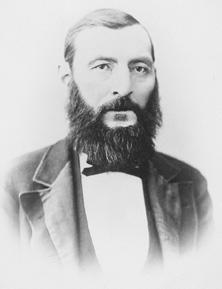
Thomas Jefferson Bowers was born in 1828 in Nashville, Tennessee, where he studied law and was admitted to the Bar. He arrived in California in 1850 and initially settled in Nevada County. Thereafter, in 1854, he moved to Sierra County where he practiced law until 1868. On July 15, 1868, President Andrew Johnson appointed Bowers to be the Chief Justice of the Territory of Idaho. He presided as Chief Justice only until 1869 when he was relieved of the position due to a change in the presidential administration. In 1869, Bowers returned to California and settled in Marin County. Bowers served as the elected Marin County District Attorney from 1873 to 1879. In 1879, Bowers was elected to serve as judge for the Marin County Superior Court and he held that position until 1884. In 1884, Bowers resettled in San Francisco where he practiced law until his death on August 26, 1893, at age 65. The cause of death was heart failure. Bowers was described by those who knew him as having a “genial manner and unassuming ways” but was “one of the best yarn-spinners.” He was a member of the Marin Masonic Lodge No. 191 of which he was a Past Master in 1878.
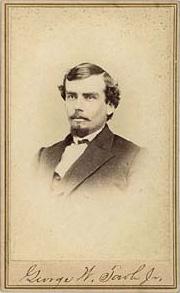
George Washington Towle was born on June 21, 1843 in Presque Isle, Aroostock Co., Maine. As a small boy, he and his family came to California by way of Cape Horn and settled in the Santa Clara Valley. He attended the University of the Pacific from 1856 to 1860, at that time located in Santa Clara. His field of study was directed toward the law field, as he became a very well known member of the law community after the Civil War.
As he says in his recollections, “sometime in 1862 I read in the Alta California that Capt J. Sewall Reed was raising a company of cavalry to go east”. “An old school mate, ‘Cheney’ Doane (who went east with the 100 and served and after the war went on to greater things, but that’s another story.) was assisting Capt. Reed in raising the Company, and desiring to enlist I wrote him asking whether I would be accepted if I applied.” …”and he replied that they desired older and heavier men. I had thought that such would be the case and so dismissed the matter from consideration.”--- Later I saw a notice that twenty five more men were wanted---the next day I went to the city, signed the roll and passed my physical examination.”
Interestingly enough, Doane failed to pass the physical, but went along to the east with the 100. There he managed to pass the physical and become a member of Co. I, and later into Co. A. What influence his close friendship with Reed had to do with all this is open to speculation.
Towle’s recollections span his entire time in the 2nd Massachusetts Cavalry. At war’s end Towle goes on “While in camp at Fairfax Courthouse there had been much discussion regarding the disposition that should be made of flags that had been presented to our company; some wishing the flags to be deposited with the California Pioneers, while I advocated their being deposited in the Capitol of the State. My idea finally prevailed, and as I intended returning to California the flags were given into my custody to be so deposited. In the meantime a blue silk banner, on which was shown the names of the different engagements in which the Company had participated, had been prepared and attached to the guidon. While riding in the cars I had unhooked my saber from my belt and placed it in the rack above, and when getting out of the cars At Readville, having the flags to look after, I forgot my saber and left the car without it. I was never able to find it. The loss of my saber has always been a regret; it had its scabbard bearing mute evidence of the service it had seen.”
He continues---“took passage on a steamer for San Francisco arriving home in the latter part of September 1865. I had shipped the flags from Bangor (he had made a stop at Bangor, Maine after mustering out) by express, and on their arrival took them to Sacramento and their delivered them to the Adjutant General of the State.”
“There are many many incidents at the time amusing or tragical or important that have not been referred to, and the chronology of the facts stated may not in all cases be accurate; but it may be truthfully said that nothing had been stated as occurring which did not occur. The wearing character of the service has been but lightly touched upon, but my honest belief has always been that the hardships attending my term of service would result in lopping off from the end of my life not less than ten years.”
Towle and his wife, Lizzie, settled in San Rafael in 1876. In 1880, he was elected as Marin County District Attorney and served in that capacity until 1882. Later, he served as City Attorney of San Rafael. After his retirement from public office in San Rafael he practiced law in San Francisco and was for many years the legal advisor for the Pacific Coast Steamship Company.
George Washington Towle died March 23, 1921, at age 77. He is buried in an unmarked grave in Mt. Tamalpais Cemetery, San Rafael. There is a headstone there for his mother, Mary. His wife had died in 1899.
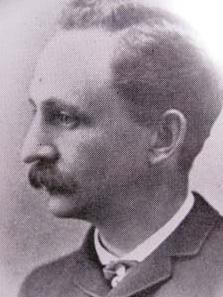
Hepburn Wilkins was born in Maryland in 1849. At the age of 14 he came to San Rafael, California, where his parents resettled in 1863. He graduated from the University of California with high honors. He was admitted to practice as an attorney in 1869. He served as the elected Marin County District Attorney from 1883 to 1885, but never sought other political office thereafter. He was the leader of the Marin County Bar for many years, and was known as an able, ambitious, and careful lawyer who practiced law with great integrity. He died at his home in San Rafael on October 5, 1899, at age 50, “as a result of over work, and too close application.” Upon his death, flags at the Court House and private buildings were displayed at half mast out of respect for his memory. His remains were interred in Mt. Tamalpais Cemetery.
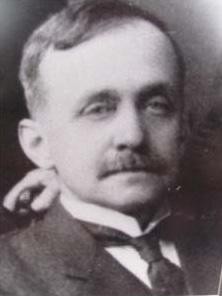
Frank Mario Angellotti was born in San Rafael, California, on September 4, 1861, son of Giuseppe and Frances L. Osgood Angellotti. His father was a native of Italy, and his mother was from the state of Maine. Frank Angellotti attended private school and Lowell High School in San Francisco, graduating in 1879. He studied law with Judges Darwin and Murphy of San Francisco, and also attended Hastings Law School, from which he graduated with a Bachelor of Law degree in 1882. Admitted to the bar by the State Supreme Court in August 1882, he began to practice law in his native town of San Rafael. In November, 1884, at age 23, he was elected District Attorney of Marin County, thus becoming the first native-born Marinite and the youngest person ever to hold that office. He remained the District Attorney until 1890 when at age 29 he was elected Judge of the Superior Court of Marin County, one of the youngest persons ever elected to that position. He served on the Marin County Superior Court bench for twelve years until 1903. In January 1903, at age 41, he was appointed to the California Supreme Court as an associate justice. In January 1915, at age 53, he was appointed Chief Justice of the California Supreme Court thus becoming the first native born Californian to hold that position. Angellotti resigned as Chief Justice on November 15, 1921, and thereafter returned to private practice and became general counsel for the Western Pacific Railroad Company. Angellotti married Emma C. Cearley on December 27, 1884. In addition to being a member of the Society of Colonial Wars, Angellotti was a member of the Marin Masonic Lodge No. 191 of which he was a Past Master in 1888 through 1890. He also held the position of Grand Master of the Masonic Grand Lodge of California in 1898 and 1899. He died at age 70 on May 23, 1932.
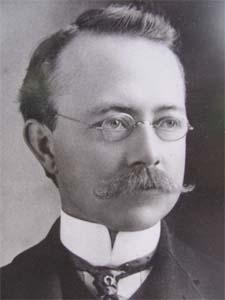
James W. Cochrane was born on May 29, 1868, in Newark, New Jersey. He was of Irish parentage, and the sixth of nine children born to Michael and Annie Cochrane, who came to California in 1869 when he was one year old. The trip was made via Panama. They located in San Rafael where, as he grew up, young James attended the schools. Later, he attended the College of the Sacred Heart at San Francisco. He graduated from St. Mary’s College on May 29, 1886, at the head of a class of seven. Mr. Cochrane began the study of law the same year with Charles Ben Darwin, a noted criminal lawyer of San Francisco, as his preceptor, and graduated from Hastings Law School. He was admitted to practice in all courts in 1888. He followed his profession in San Francisco until he was elected Marin County District Attorney in 1891. It was said that as a prosecuting attorney he had established a reputation second to none in Northern California. He served as District Attorney through 1894. He was a commissioned officer of Company D, Fifth Regiment State Militia, and a prominent member of the Young Men’s Institute, No. 10, of San Rafael, and was its President for three successive terms. Cochrane was also a member of the Grand Board of Directors of the Young Men’s Institute for two successive terms. Additionally, he was a member of Mount Tamalpais Grove, No. 58, of the United Ancient Order of Druids of the State of California. On November 22, 1890, Cochrane married Lizzie G. Atwater, a native of New York, who was a primary school principal in San Rafael. Cochrane died on September 27, 1920, at age 52, after an illness of more than a year.
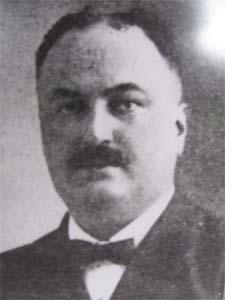
Ennio Batista Martinelli was born in Nicasio, California, on February 15, 1868, to Lorenzo and Carolina (Bonetti) Martinelli. He was educated in the public schools of Marin County. He graduated from the University of Santa Clara in 1889 with an A.M. degree. Thereafter, he studied law in the offices of Sullivan & Sullivan and T.I. Bergin of San Francisco. Martinelli was admitted to the State Bar of California on January 13, 1891, and continued his association with Sullivan & Sullivan until the end of 1891. In 1892, he returned to Marin County and practiced alone in San Rafael. He served as City Attorney of San Rafael from 1893 to 1895. He thereafter served as the elected District Attorney of Marin County from 1895 through 1899. From 1900 to 1906, he served as Chairman of the Board of Education of the City of San Rafael. In 1902 he became a member of the board of managers of the Mendocino State Hospital and served on the board until 1909. In 1908, he was elected California State Senator from the Eleventh Senatorial District, serving in the 38th and 39th sessions. In 1911, he entered into a partnership with Henry E. Greer (who would later also be elected Marin County District Attorney),practicing under the firm name of Martinelli and Greer. He married Jessie Pearl Jordan on December 15, 1895. E.B. Martinelli’s sister, Genevieve, who was admitted to the California State Bar on April 16, 1915, became the first woman prosecutor in the history of the Marin County District Attorney’s Office, when she was appointed District Attorney pro tem on August 14, 1919, to serve temporarily during the vacation of District Attorney Edward I. Butler. E.B. Martinelli died on August 4, 1930, at his home in San Rafael at age 62, after being confined to bed for four years following intervals of paralytic strokes.
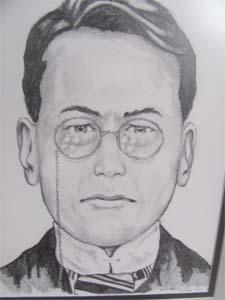
Hugh J. McIsaac was born on June 23, 1874, in Point Reyes Station, California. His father was a native of Nova Scotia, Canada, who was born in 1840, and who came to the United States as a young man serving four years in the Union Army during the Civil War. His father thereafter came to California and settled in Olema where he established a successful dairy business. Hugh McIsacc studied in the Marin County public schools before entering St. Mary’s College, where he graduated in 1896. He subsequently studied law under Judge James F. Smith, and after taking a course of lectures at the law department of the University of California, was admitted to the California State Bar in 1897. Beginning the practice of his profession in the office of his former tutor, Judge Smith; McIsaac continued with much success until November 8, 1898, when he was elected Marin County District Attorney serving one term through 1902. He unsuccessfully ran for Judge of the Marin County Superior Court in 1902. Thereafter, he practiced law in San Francisco and served as an election commissioner of that city. He was an active member of the Society of Native Sons of Marin County. He died on December 3, 1949, at age 75, in Los Angeles, California.
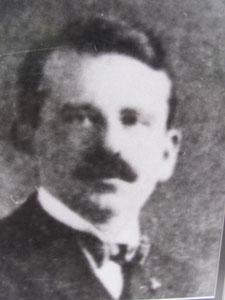
Thomas Patrick Boyd was born in San Rafael, California, in 1873. He attended the public schools in Marin County. His father died when he was a young boy. When he was a teen, he became a mechanic. At age 19, he became a court reporter and also attended Hastings Law School in San Francisco. Upon being admitted to the California State Bar in November 1893, he began his practice in San Rafael, becoming the City Attorney of San Rafael in 1896. In 1903, he began his service as the elected Marin County District Attorney and held that position for twelve years through 1915. After serving as District Attorney, he resumed his private law practice. For more than 26 years he was a member of the Marin County Board of Education and served as its president for more than half that time. During World War I, he was a member of the Draft Board for Northern California, serving as its secretary. He was also appointed under Governor Hiram Johnson to the Board of Managers of Napa State Hospital. Boyd died of heart failure on January 28, 1933, at age 60, at his home in San Rafael.
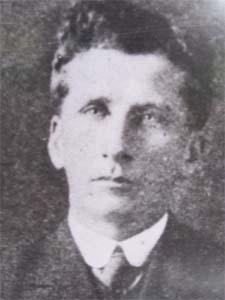
Born in Monterey, California, on November 21, 1874, Edward Ignatius Butler was the second of four children. His father, a carpenter by trade, moved his family a short time later to Napa. In 1880, the Butler family moved to Marin County, traveling by horse and wagon, taking a route via Petaluma, Tocaloma, and Olema, finally arriving in Inverness where they settled in what was then Carlin Gulch. The Butlers acquired several cows and became dairy farmers, shipping butter to San Francisco by rail from Point Reyes Station. In 1884, a second move was made, taking the family to a large dairy ranch on the Pt. Reyes peninsula near Limantour Bay, where sailing schooners took the butter to San Francisco.
Growing up in West Marin, Butler attended the local schools while keeping up with his ranch chores. In 1896, he left Marin to attend old St. Mary’s College in Oakland. Although he had only a grammar school background, he studied hard so that by 1900 he had finished both high school and college and earned his A.B. degree. He entered Hastings College of Law in San Francisco in 1900 and graduated in 1903. In May 1903, he was admitted to the California State Bar after passing the bar exam. Shortly thereafter, he joined the law firm of Lemmon and Haskins in San Francisco and defended indigent defendants to obtain courtroom experience. By 1905 he opened up his own law practice in San Rafael. His advent into politics in 1906 was a success when he was elected to the California State Assembly for two 2-year terms. In 1911, he was an unsuccessful candidate for Marin County District Attorney, losing to the incumbent, Thomas P. Boyd. In 1912, he was elected San Rafael City Attorney and served in that position until 1915. Thereafter, in 1915, he was elected Marin County District Attorney and held that office through 1919. In 1920, Butler was appointed Judge of the Marin County Superior Court to fill out the unexpired term of Judge Edgar T. Zook. Butler ran for re-election five times, each time without opposition. He retired from the bench in 1951, after serving 31 years. Butler never married. He died at his residence in Fairfax on November 27, 1961, at age 87.
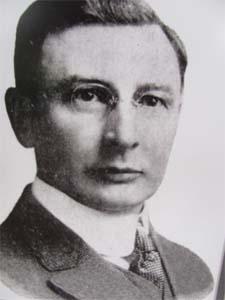
Henry Elijah Greer was born on December 29, 1873, on a farm in the middle of the Illinois corn belt. At an early age he realized he wasn’t cut out to be a farmer. He attended a private school and passed a county superintendent’s examination that qualified him as a rural teacher. At age 19, he obtained his first job teaching 40 students in a one-room schoolhouse where he doubled as the janitor. He was paid $40.00 a month. In 1894, at age 21, he was hired to teach at San Jose Business College in San Jose, California, teaching commercial arithmetic, bookkeeping, and commercial law. After teaching there for four years he was hired as a teacher to teach commercial courses at the Mt. Tamalpais Military Academy in San Rafael in 1898, at age 24. Greer taught there for ten years.
At age 34, while he was still a teacher, he took a two-year course to become a lawyer that was sponsored by the California Supreme Court. At that time, the bar exam was an oral examination conducted by three justices of the California District Court of Appeal in San Francisco who would take turns firing questions in rapid succession to candidates. Greer successfully passed the exam and was admitted to the California State Bar on February 23, 1910, at age 36. Greer became a law associate of former Marin District Attorney E.B. Martinelli who was then in private practice, and within two years they formed the law partnership of Martinelli and Greer. In 1914, when Edward I. Butler, San Rafael’s City Attorney, was elected as Marin District Attorney, Greer entered the race for San Rafael City Attorney. Greer won the election for San Rafael City Attorney which a paid a monthly salary of $50.00. During his tenure as San Rafael City Attorney Greer compiled a handbook of all San Rafael ordinances, including such prohibitions as saloons remaining open after 11:00 p.m., driving cattle on sidewalks (as opposed to streets),and hitching horses to trees under six inches in diameter.
In 1918, during World War I, at age 44, Greer resigned his position as City Attorney and volunteered for the American Red Cross Field Service. He was commissioned as a first lieutenant serving nine months in battle-ravaged northern Europe where he assisted in providing medical supplies to wounded troops. He returned to San Rafael in the fall of 1919, and by 1920 he was appointed Marin County District Attorney by the Marin County Board of Supervisors after the current District Attorney, Edward Butler, was appointed to serve as Judge of the Marin County Superior Court. Greer took office as Marin County District Attorney at the height of Prohibition. During his tenure as District Attorney, Greer would regularly join the Sheriff’s posse to raid illegal bootleggers in rural Marin County, confiscating stills that would be stored as evidence in the Courthouse basement. After serving 15 years, Greer was defeated by Albert Bagshaw in the November 1934 election for Marin County District Attorney. In 1938, Greer again ran for public office and was elected to serve as Marin County Superintendent of Schools, a job he held for twelve years until he voluntarily retired in 1951 at age 78. Greer was a member of the Marin Masonic Lodge No. 191, of which he was a Past Master in 1907. He died on January 19, 1961, at age 87, in San Rafael.

Albert Edward Bagshaw was born in Mill Valley, California, on April 7, 1902. His father, Fred W. Bagshaw, was Mill Valley’s first police officer. Bagshaw attended Marin County public schools including Tamalpais High School in Mill Valley. Thereafter, he attended Lick-Wilmerding, a private high school in San Francisco. While supporting himself by working for a milk company in San Francisco, he studied law at the University of San Francisco School of Law. He was admitted to the California State Bar in October 1927. His first job after obtaining his license to practice law was as secretary to the United States Marshall in San Francisco. He rose to the position of Deputy Marshall and thereafter in 1929 was appointed to serve as an Assistant United States Attorney in the United States Attorney’s Office in San Francisco. He served in that post through 1934, when at age 32, he was elected Marin County District Attorney, defeating fifteen-year incumbent, Henry E. Greer.
Bagshaw served as Marin County District Attorney for fifteen years through 1950. During his first month in office as District Attorney, on January 16, 1935, Bagshaw gained national fame for his role in extinguishing a breakout at San Quentin state prison. On that day, four inmates who were convicted killers and kidnappers, headed up to the house of Warden James B. Holohan on the prison grounds. There Holohan was savagely beaten and knocked unconscious by one of the inmates, Rudolph Straight, for trying to call for help. The warden had been lunching with staff and parole board members, and the inmates armed with four .45 caliber pistols ordered the members of the board to take off their clothes. Dressed as civilians the men then kidnapped the board and two correctional officers in a big Studebaker, and headed up ten miles past San Rafael. In his book, The San Quentin Story, which in 1937 would become a film starring Humphrey Bogart, Clinton T. Duffy, assistant to Warden Holohan and future San Quentin Warden, describes the event: “Indeed, every road in a fifty mile radius was soon swarming with police cars, and it seemed inevitable that someone would be killed.” Upon arriving at a creamery in Tomales, one of the inmates, Alexander MacKay, “turned sharply off the road, but he couldn’t control the car and it plowed into a ditch.” The escapees then “scrambled for grass cover, and…took refuge inside a barn just as the first of the pursuing posses arrived,” which included District Attorney Bagshaw and the Undersheriff. MacKay and the others “dropped their weapons and prepared to surrender, but Straight was beyond all reason. He strutted out of the barn with a gun in each hand, and was shot through the head by District Attorney Albert Bagshaw of San Rafael.” Later, Bagshaw prosecuted and convicted the surviving inmates and two of them became the last people to be hanged in California.
During his tenure, Bagshaw earned the reputation as Marin’s “fighting DA,” cleaning up the gambling that had flourished in Marin by regularly joining in law enforcement posses that raided gambling dens. In the early 1940s he went after slot machines in Marin. During World War II, while still serving as District Attorney, Bagshaw went on leave from office to serve as a Lieutenant Commander with the Intelligence Unit of the United States Coast Guard. While Bagshaw was on leave, in December 1943, the Marin County Board of Supervisors temporarily appointed Deputy District Attorney Harold J. Haley to serve as District Attorney. Upon conclusion of his service with the Coast Guard, Bagshaw returned to his position as District Attorney. In 1950, Bagshaw unsuccessfully ran for Marin County Superior Court Judge. Thereafter, he entered into private practice forming the firm of Bagshaw, Martinelli, Corrigan, and Jordan. He served as the first president of the Marin County Peace Officers Association. Bagshaw’s daughter, Diane Washburn, became a well-known fashion model and television personality, marrying stage and screen actor Jack Washburn. Albert Bagshaw died at age 82 on July 10, 1984, in Sonoma, California.
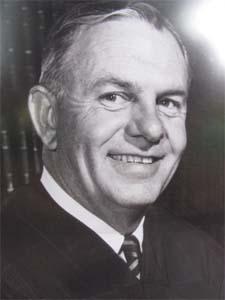
Richard Maury Sims, Jr. was born on September 20, 1910, in Berkeley, California. His father was an attorney in San Francisco. He graduated from Stanford University with Phi Beta Kappa honors. Thereafter, he attended Harvard University School of Law. He was admitted to the California State Bar in May 1935. During World War II, he served with the U.S. Navy’s amphibious forces in the landings on the Philippines and at Iwo Jima. He was discharged with the rank of lieutenant commander. In 1950, he was elected Marin County District Attorney. He served as District Attorney until 1953 when he was appointed Judge of the Marin County Municipal Court by Governor Earl Warren. After serving 7 years on the Municipal Court bench, he was appointed Judge of the Marin County Superior Court in 1960 by Governor Edmund G. Brown. Four years later, in 1964, Sims was appointed by Governor Brown to serve as Justice of the California Court of Appeals for the First Division. He retired from the Court of Appeals in 1978. Sims lived in Marin County for over four decades and had a long record of civic service as well as holding positions on numerous judicial and bar association panels. One of his sons, Richard M. Sims, III, served as a Judge of the Sacramento Superior Court. Sims died of a heart attack on November 19, 1985, at age 75, while hiking near his home in Ross.
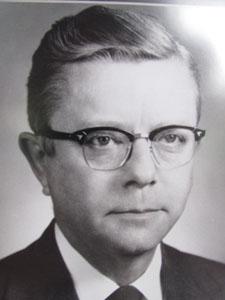
William Otto Weissich was born on October 31, 1920, in San Francisco, California, and grew up in Mill Valley where his family had settled in 1907. He attended Marin County schools and graduated from the University of San Francisco where he also obtained his law degree from the School of Law. During World War II, he served in the U.S. Army Reserve. In December 1946, he was admitted to the California State Bar and entered into private practice in Marin. In 1950, he joined the Marin County District Attorney’s Office as a Deputy District Attorney. When District Attorney Richard M. Sims was appointed to the Marin County Municipal Court bench in 1953, Weissich was appointed District Attorney by the Marin County Board of Supervisors to serve out Sims’ remaining term. Thereafter, Weissich was elected to serve as District Attorney and held that position until 1960 when he resigned and entered private practice again. During his tenure with the Marin County District Attorney’s Office he gained a reputation as a fearless, hard-hitting, and relentless prosecutor who in either victory or in defeat was neither overly elated nor unduly discouraged.
In 1955, Weissich prosecuted and convicted Malcolm Schlette for the crime of arson. Malcolm Schlette was sentenced to state prison, where he served a lengthy prison term. On November 18, 1986, several years after he left the District Attorney’s Office, as William Weissich sat behind his desk in his private law office in San Rafael, Malcolm Schlette entered Weissich’s office. At point blank range, Schlette fired a handgun at Mr. Weissich shooting Weissich at least twice in the forehead and upper chest. Mr. Weissich died instantly. Schlette fled the crime scene. Upon report of the shooting, Schlette was surrounded in his escape vehicle by Marin County police officers shortly thereafter. Schlette thereupon committed suicide. A typed note dated November 17, 1986, and signed by Schlette, was found in his apartment after the murder. In the note, Schlette indicated that his “final act” of revenge was to perform “acts of violence” on five people he believed were responsible for sending him to prison. One of those named persons was District Attorney William O. Weissich, the man who had prosecuted and convicted Schlette for arson 31 years before.
On June 10, 2005, William O. Weissich’s name was added to Prosecutors Memorial at the Ernest F. Hollings National Advocacy Center on the campus of the University of South Carolina in Columbia, South Carolina. This memorial was established by the National District Attorneys Association in 2004 to honor prosecutors killed in the line of duty. Because William Weissich was tragically murdered as the result of his work performed in the line of duty as the Marin County District Attorney, he was truly deserving of having his name included on the memorial.
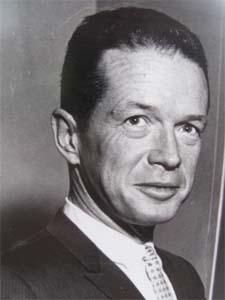
Roger Patrick Garety was born on October 21, 1920, in San Francisco, California. He graduated from St. Ignatius High School in San Francisco, where he lettered in football and was student body president. In 1942, he graduated from Santa Clara University, where he was class valedictorian. During World War II, he was a second lieutenant in the U.S Army 86th Division, seeing action in Europe and joining occupation forces in the Philippines. Thereafter, he attended the University of San Francisco School of Law, graduating in 1948. He was admitted to the California State Bar in January 1949 and became a Deputy District Attorney for the San Francisco District Attorney’s Office, then led by Edmund “Pat” Brown who would later serve as Governor of California. In 1951, Garety was hired as a Deputy District Attorney for the Marin County District Attorney’s Office by Richard M. Sims Jr., one of his law school teachers who would later become a judge for the Marin Superior Court and a justice on the California Court of Appeals. When District Attorney William Weissich resigned in 1960, Garety was appointed District Attorney by the Marin County Board of Supervisors to serve out Weissich’s remaining term. Thereafter, in 1962, Garety was elected to serve as District Attorney and held that position until 1964 when he did not seek re-election, deciding to enter private practice. During his 13-year tenure with the Marin County District Attorney’s Office, Garety prosecuted cases ranging from homicide to consumer fraud. For many years Garety served on the state Alcohol Beverage Control Appeals Board. Additionally, he was a past president of the Marin County Bar Association. In 1986, he joined the Marin County Courts serving as a court commissioner. He retired in 1987. Garety died on September 15, 2007, at age 86, at his home in Santa Rosa, California.
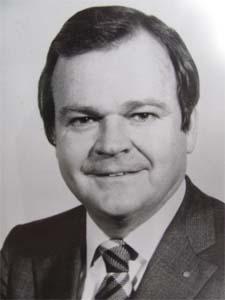
Bruce Benjamin Bales was born in May 1923 and grew up in Marysville, California. He graduated from the University of California at Berkeley with honors, making his way through college with the aid of a scholarship and later with the aid of the GI Bill after Navy service during World War II. During World War II, Bales served in the Navy as an assistant communications and deck officer aboard the attack transport, “USS Pickens,” and participated in the Iwo Jima and Okinawa campaigns. Thereafter, he attended the University of California’s Boalt Hall School of Law, graduating in 1949. He was admitted to the California State Bar on June 20, 1950, and entered private practice in San Rafael. In 1953, he joined the Marin County District Attorney’s Office as a Deputy District Attorney. In 1960, he was appointed Assistant District Attorney by District Attorney Roger Garety. In 1964, when Roger Garety did not seek reelection, Bales ran for District Attorney and won the election at age 41. In 1969, Bales became the first Marin County District Attorney to occupy office in the newly constructed Marin County Civic Center which was designed by Frank Lloyd Wright. Bales served as District Attorney for fourteen years through 1978. In 1978, in a very contentious election for District Attorney, Bales was challenged by Deputy District Attorney Jerry R. Herman. Herman won the election which was the first time in the history of the Marin County District Attorney’s Office that the elected District Attorney was challenged by one of his deputies. Upon leaving office, Bales entered into private practice. Bales became an inactive member of the California State Bar on January 1, 2004, after a 54-year career.
Mr. Bales died on March 4, 2013, at age 89, in Novato, California.
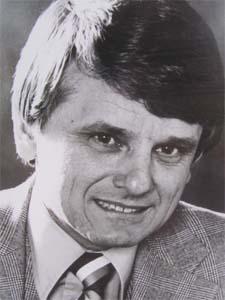
Jerry Richard Herman was born in March 1937 in Los Angeles, California, and grew up in Belmont and San Carlos, California. He attended twelve schools before quitting high school after his junior year to join the Navy. During his four years in the Navy, Herman graduated first of 80 students in his radar course and selected assignment on a Navy destroyer. Before his discharge, he was running his ship’s radar section and had earned his high school diploma. Thereafter, Herman attended the College of Marin, where he was elected student body president and was a member of the debate club. He then attended and graduated from San Francisco State College. Upon graduation from college, Herman was admitted to Stanford Law School on a three-year academic scholarship. He was admitted to the California State Bar on January 5, 1965, and entered into private practice with a law firm in San Diego. After approximately one year, Herman decided he wanted to be a trial lawyer and joined the Marin County District Attorney’s Office as a Deputy District Attorney. By 1978, Herman had tried more than 200 jury trials and gained the reputation as a tenacious, aggressive, and skilled trial attorney, earning him the nickname, “Mad Dog.” According to Herman, of those 200 trials, only two resulted in acquittals and only six resulted in “hung juries.” In 1975 to 1976, Herman, along with Assistant District Attorney Terrence Boren, prosecuted the so-called “San Quentin Six” case involving the prosecution of six defendants accused of taking part in the 1971 San Quentin prison breakout attempt that left black militant convict George Jackson dead along with three correctional officers and two inmate trusties. The trial was of approximately seventeen months duration and was, at the time, the longest criminal trial in the history of California. The trial, conducted in a high security courtroom, included a three-month jury selection process, which involved consideration of more than two thousand prospective jurors. Herman’s handling of the trial won him a statewide reputation and earned him the first “Outstanding Prosecutor of the Year” by the California District Attorneys Association in June 1977. In June 1978, Herman successfully challenged incumbent District Attorney Bruce Bales in the election for Marin County District Attorney, the first time in the history of the office that a deputy district attorney challenged the incumbent D.A. Herman was re-elected for four more terms, holding office until March 1998, when he was forced to retire at age 61 due to health issues. As Marin County District Attorney for over 19 years, Herman holds the record for the longest tenure as District Attorney.
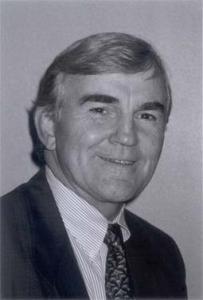
Michael Arnold Gridley was born in August 1943, in San Francisco, California. He attended local schools while growing up in San Francisco. Thereafter, he attended the University of California at Berkeley, where he was a standout athlete earning varsity letters for football, rugby and track & field. After graduating from Berkeley, he attended Golden Gate University School of Law in San Francisco. Gridley was admitted to the California State Bar on January 7, 1971. Shortly thereafter, he was hired as a Deputy District Attorney by the Marin County District Attorney’s Office, where he remained a career prosecutor for over 32 years. When Jerry Herman was elected District Attorney in 1978, Herman selected Gridley to serve as Chief Assistant District Attorney. When Herman retired in March 1998, the Marin County Board of Supervisors appointed Gridley to serve as District Attorney, filling out Herman’s remaining nine-month term. Gridley, who thereafter did not seek to run for District Attorney, resumed his position as Chief Assistant when Paula Kamena was elected District Attorney, taking office in January 1999. With his nine month term, Gridley holds the record for the shortest tenure as Marin County District Attorney.
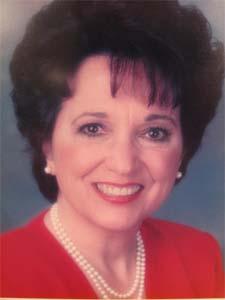
Paula Freschi Kamena was born in Oakland, California, on December 22, 1946. She grew up in Piedmont, California and in 1964 graduated from Holy Names High School in Oakland. She attended the University of California at Berkeley where she graduated with a B.A. degree in 1968. Thereafter, she obtained a Masters degree in Criminology with an emphasis in counseling and psychotherapy from U.C. Berkeley in 1969. At age 22, in 1969, Kamena started her career with the County of Marin as a probation officer, initially as a counselor at Juvenile Hall. In 1978, Kamena began law school at night at San Francisco Law School while still working full time as a probation officer. She graduated from law school in 1982 and was admitted to the California State Bar on December 3, 1982. She was hired as a Deputy District Attorney for the Marin County District Attorney’s Office in 1983. As a Deputy District Attorney, she organized and wrote the first county Domestic Violence policy and protocol. In 1993, as a member of the two-attorney team assigned to prosecute the homicide case of People vs. Masters, Woodard, & Johnson, she successfully prepared, presented, and argued the penalty phase case against Masters, where a Marin County jury unanimously voted for the death penalty. In 1995, Kamena was appointed Assistant District Attorney by District Attorney Jerry Herman. In June 1998, she was promoted to Chief Assistant District Attorney by District Attorney Michael Gridley. Kamena was elected as Marin County’s first female District Attorney in June 1998, being installed in office in January 1999.
As District Attorney, Kamena was the driving force behind the establishment of the Jeannette Prandi Children’s Center, the state of the art child friendly facility where child victims of sexual assault are interviewed. Additionally, during Kamena’s tenure as District Attorney she was instrumental in helping to establish, and participated in, numerous programs and endeavors, including the Sexual Assault Response Team, the Adult Drug Court, the Juvenile Drug Court, the Mental Health Court, the California Community Partnership for the Prevention of Financial Elder Abuse, the Marin City Fatherhood Program, the Share the Road bicycle campaign, the North Bay High Tech Task Force, the Bad Check Program, DA School Liaisons, DA police Liaisons, DA community action group liaisons (Mental Health Board, Human Rights Commission, etc.),Consumer Tip column in the Marin IJ, DA Adopt-a-highway (office volunteer activity),and County-wide Domestic Violence Protocol (with police agencies.) While she served as District Attorney, she served as a board member of the California District Attorneys’ Association and the California State Council on Mentally Ill Offenders. She also was a member of the Marin County Police Chiefs’ Association and was selected as the first female president of this organization.
In May 2001, Kamena decisively defeated (by a 6 to 1 margin) an aggressive recall effort by medical marijuana advocates who claimed that their civil rights were being violated. This recall effort was the first time a Marin District Attorney had been so challenged. After serving as District Attorney for six years, Kamena retired at age 58 on December 30, 2004.




